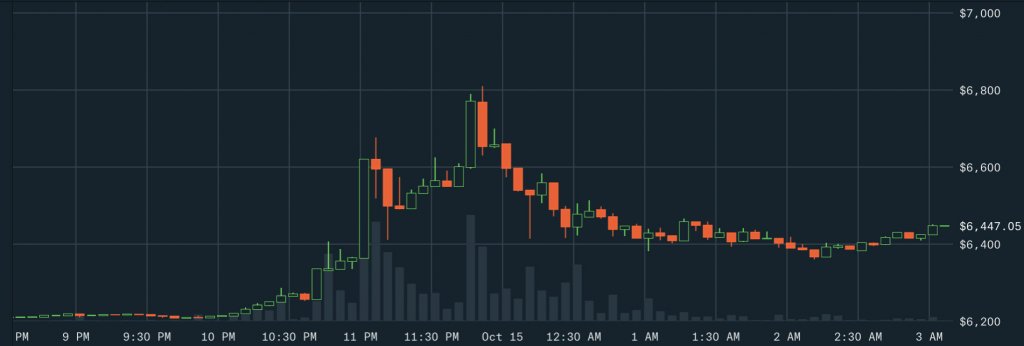
2018-10-30 19:00 |
The stablecoin Tether has been the subject of controversy, speculation, and what some are calling “weaponized FUD” in recent weeks. Some have speculated the company’s lack of transparency surrounding its dollar-backed crypto offering could mean insolvency. Last week, CryptoSlate reported that Tether removed almost half the USDT in circulation and burned them. But, rather than imploding, what if the company is simply winding down?
Stablecoin Boom Amid Tether HeadlinesThe theory posed by an independent researcher who goes by the name Hasu. In a post on his Medium blog, Hasu explains why Tether might actually be selling off their assets in preparation to close up shop and leave the market altogether. And, why that could be good for all parties involved.
Hasu points to Tether’s recent trouble as something competing stablecoins could use to their advantage, since previously USDT’s position as a stablecoin was so well-secured that it would take either insolvency or negative consequences from regulation for them to fail, and for competing coins to take their place.
This month, competing stablecoins like Paxos and TrueUSD, both pegged to the U.S. dollar and thus in competition with Tether, have had banner sales and are trading at just over one dollar as of this writing. Tether is back up to just under a dollar in value, but we still see tokens being reclaimed, with another 100 million USDT sent to its treasury account last week.
Quick Tether update:
– Since the $500M burn, $100M more have been redeemed
– Tether mcap now at $1.92B
– Spread to $1 continues to close, now at 1.5%. Bitfinex Premium <100$
– Expect redemptions to continue and Mcap to fall at least until USDT is back at $1. pic.twitter.com/o9aZ3jZcXc
— Hasu (@hasufl) October 27, 2018
Buying Back the StockIf Tether actually is planning an exit from the market, as Hasu speculates, then these massive transfers of USDT could be the company buying up coins at a discount while the value was low then destroying or retiring them, and crediting themselves the value of the coin. This is similar to what companies on Wall Street do when buying back stocks they believe to be trading for less than the fair market price.
Buying back their tokens in this way has the potential to make Tether millions by removing discounted USDT from circulation and reclaiming their fiat value. If the powers that be behind Tether have decided to wind the project down, selling off their inventory before doing so would be a good way to do it. Hasu states:
“Even if we assume that $200M was withdrawn by non-Tether traders, that would mean Tether still managed to buy back $600M worth of tokens. With a 3–5% discount, this buyback made them between $18M and $30M.”
Related: Who Is Winning The Stablecoin Race?He goes on to say that all the attention surrounding Tether, and its corresponding price decline, has provided just the “external shock” needed to dethrone Tether as the king of the stablecoin heap. FUD or not, it does seem to have had an effect. We’ve seen a boom in the number of stablecoins hitting the market recently, including Gemini Dollar, who claim to be the “world’s first regulated stablecoin.”
A Tether exit has the potential to clear the playing field for these new stablecoins while allowing the company itself to reclaim fiat assets by gradually removing USDT from the market and selling them off. If that really is the case, we should see the amount of USDT in circulation slowly decline in the coming weeks.
USDT’s market cap as of this writing was just under $2 billion, and 1.93 billion remain in circulation.
Learn more about stablecoins:
View CryptoSlate’s list of actively trading stablecoins Read about recent stablecoin newsThe post Is Tether Quietly Exiting the Market? appeared first on CryptoSlate.
origin »Tether (USDT) на Currencies.ru
|
|









